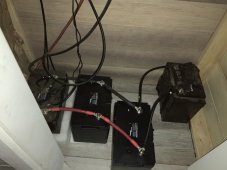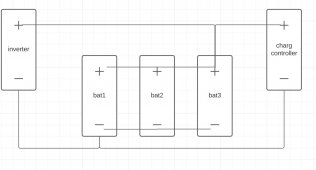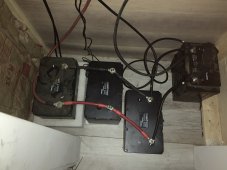Justjeanne1
New Member
- Joined
- Jul 20, 2021
- Messages
- 28
As you can see, I have a 2000w inverter, a MPPT40 charge controller, and 4 100ah lithium batteries. Currently charging in with 2 215 w solar panels. Yes I am adding more, and another charge controller BUT, not sure I need to. This is a weekend sheshed, that has 5 outlets, and a mini inverter fridge. For easy math, let’s say I am using 4 amps. Refrigerator 1.6, tv .6, and router .5, I have rounded up for ease of explanation. Not sure how much the controller and inverter are using. At 5 pm, I am 100% charged. Sun goes down (Still charging minimally) I am using 1% of my battery bank per hour. It is now 6:19pm. And I am down to 85%. How is this possible? I used a video from William Prowse for this configuration. But I must have done something wrong? Should the positive wire go from the charger to the 40amp fuse to a 200 amp breaker, where it meets with the battery Positive, or should I take that down to the battery after the 40 amp fuse?







